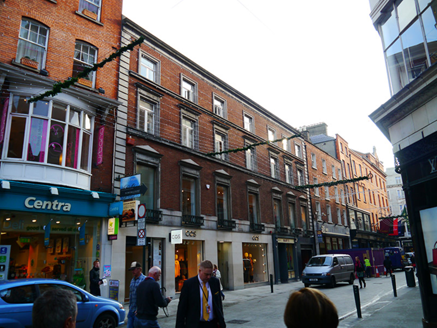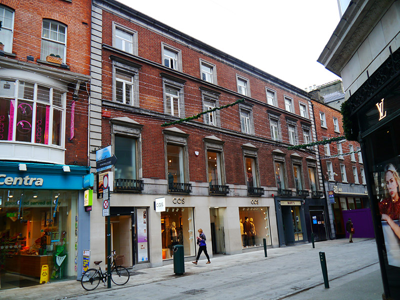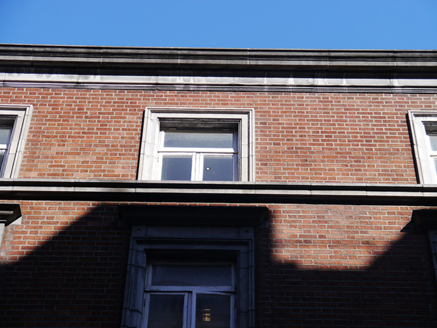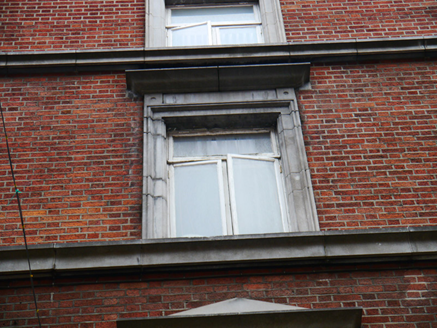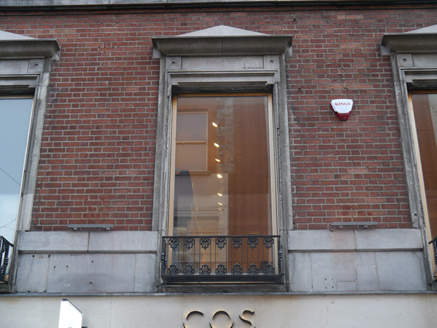Survey Data
Reg No
50910170
Rating
Regional
Categories of Special Interest
Architectural, Social
Previous Name
Wicklow Hotel
Original Use
Hotel
In Use As
Shop/retail outlet
Date
1905 - 1960
Coordinates
315916, 233904
Date Recorded
01/10/2015
Date Updated
--/--/--
Description
Attached seven-bay four-storey former hotel, remodelled c. 1907, formerly two two-bay buildings and one three-bay building. Partially rebuilt and altered c. 1950. Now in commercial retail use with public house to eastern three bays, latter incorporating former carriage-archway, and with recent replacement shopfronts to ground floor. Abutted by multi-storey block to rear (north). L-plan hipped roof to central and eastern bays, with south ridge running perpendicular to street, flat to northeast, and hipped roof to western two bays. Shouldered rendered chimneystack with red clay pots to west party wall, concealed behind ashlar masonry parapet with moulded cornice (appears to be concrete). Concealed rainwater goods. Textured machine-made red brick walling (c. 1945), laid in Flemish bond, with concrete dressings, including strip quoins to outer edges, continuous moulded sill courses to topmost two floors, and flush ashlar platband at first floor sill level. Square-headed window openings, diminishing to upper floors, with moulded masonry architraves (apparently concrete, possibly ashlar limestone on upper floors), surmounted by pedimented moulded cornice over frieze to first and second floors, with simplified triangular pediment to first floor. Replacement bipartite side-hung timber casement windows with top-hung overlights, and replacement full-height fixed casements to first floor with decorative cast-iron balconettes affixed to sills. carriage-archway leads to Glendenning Lane and has modern-clad surrounds and replacement steel and timber door inserted.
Appraisal
The former Wicklow Hotel which was extensively remodelled, c. 1907 to the designs of George O’Connor. Further alterations were made during the 1940s and 1950s, including the rebuilding of the front wall in 1945, to the designs of Thomas McNamara, when it is thought the concrete dressings were applied. Despite successive alterations, loss of historic fabric and modernization of the ground floor, the building remains an important feature of the streetscape in this architectural conservation area.
